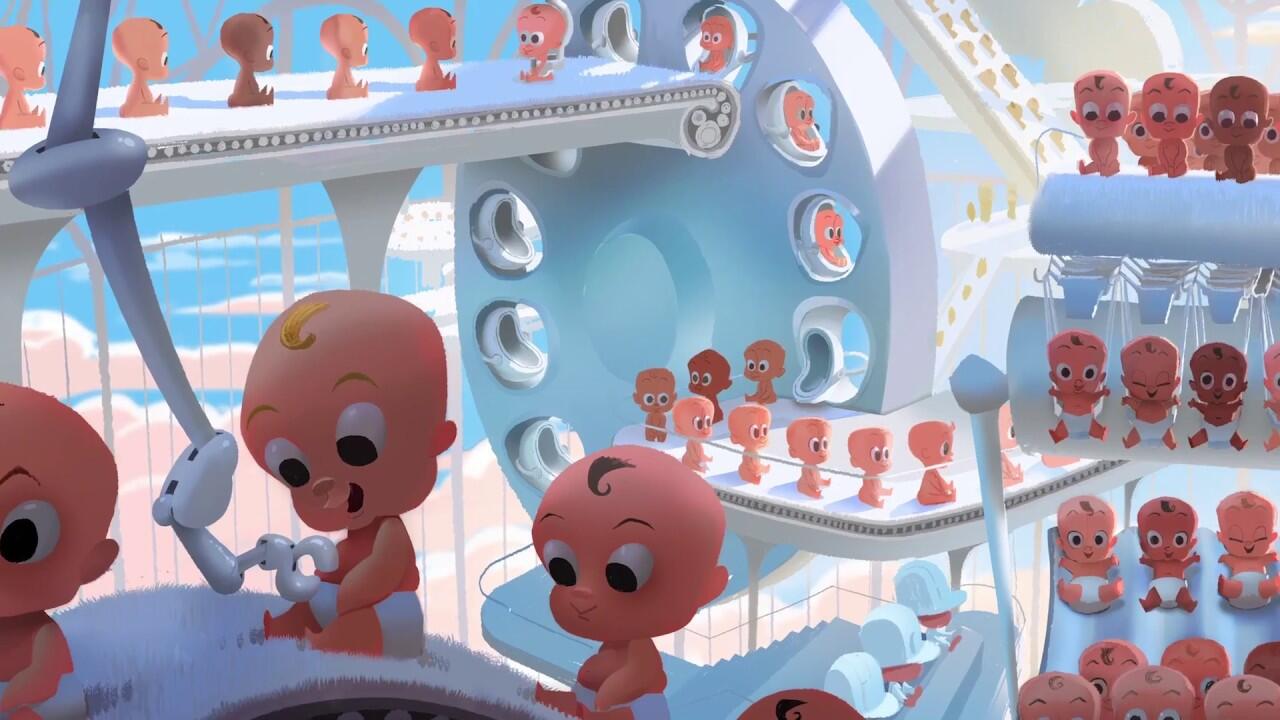

For starters, they can expect higher salaries: In April, average hourly earnings jumped 4.4% from a year earlier. So what does the Forever Labor Shortage mean for workers in the years ahead? The bottom line is there will be an all-out competition for their services. That means employers face decades of an essentially stagnant labor pool. Over the following decade, that growth is projected to slow even more, to 2.9%. The Congressional Budget Office projects the potential labor force to expand by a mere 3.6% between 20 - one-eighth of the pace in the 1970s. And the shortage is just getting started. Despite all the talk of how "no one wants to work anymore," there's actually a higher share of 25- to 54-year-olds with a job today than before the pandemic. In April, the unemployment rate declined to its lowest level since 1969 - meaning there are few available workers left to hire. "The slow-moving demographic tidal wave is finally cresting." "All these tailwinds were pushing in the same direction, and suddenly they were all stopping at the same time," says Aaron Terrazas, the chief economist at the job-search site Glassdoor. Immigration came to a standstill, the boomer retirement wave began in earnest, and millions of younger boomers decided to tap into the stock boom and retire early. Then COVID-19 put the labor shortage into hyperdrive. That meant there were no new workers left to hire, just as the first of the baby boomers were starting to retire. And after Donald Trump took office, immigration took a nosedive. But by 2000, the rising supply of female workers reached its peak. For a few decades, an influx of women and immigrants into the workforce kept the labor pool expanding.
/cloudfront-us-east-1.images.arcpublishing.com/gray/H2PBTAWGIFHS3AKNXRNPCCQNOA.jpg)
The pill and the legalization of abortion sent fertility rates cratering - from 3.7 babies per woman in 1960 to 1.8 babies a decade and a half later. If you were looking to hire, times were good.īut the boomers, unlike their parents, didn't have many babies themselves. The working-age population jumped by 17% in the 1960s and by another 19% in the following decade. As the boomers came of age, the economy was suddenly flush with millions of new workers looking for jobs. It may seem like ancient history today, but the baby boom that followed the Second World War spurred a massive shift in the US labor market. "It's going to continue to be really hard to attract people and get them into new jobs." We're entering what is shaping up to be the Forever Labor Shortage. "The labor shortage we're dealing with today is likely to remain this way - and perhaps get even worse," says Jay Denton, the chief analytics officer at LaborIQ, which provides salary analysis to employers.
:quality(85)/cloudfront-us-east-1.images.arcpublishing.com/gray/DWLE2ZXYMN42D6KSU2WZPVOFAA.jpg)
The abundance of workers made them cheap - and disposable.īut now, those baby boomers are retiring in droves, and companies are suddenly finding themselves without an endless reserve of available bodies. Hate your job? Fine - we'll just replace you with one of the hundred others who would be happy to fill your shoes. Ever since the baby boom that followed World War II, companies have enjoyed a never-ending supply of workers to tap. Somehow, workers still hold the power - and a massive shift that's underway in the labor market could keep it that way forever. Ask pretty much anyone who's hiring these days, and they'll tell you something curious: It remains incredibly hard to find and hire enough qualified people for the roles they're desperately trying to fill. By any objective measure, the balance of power in the job market should be tipping back to employers. The economy is slowing, and the Federal Reserve is hiking interest rates at the fastest pace in decades. But now, layoffs are up and job openings are down.
#COVID BABY BOOM FREE#
They've been forced to offer big salaries and generous perks, while employees were free to shop around for better offers or simply walk off the job to join the Great Resignation. It often indicates a user profile.Įver since the pandemic, American companies big and small have been scrambling to find enough workers to stay fully staffed. Account icon An icon in the shape of a person's head and shoulders.


 0 kommentar(er)
0 kommentar(er)
